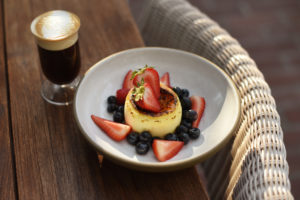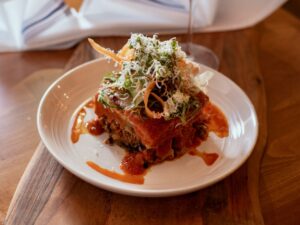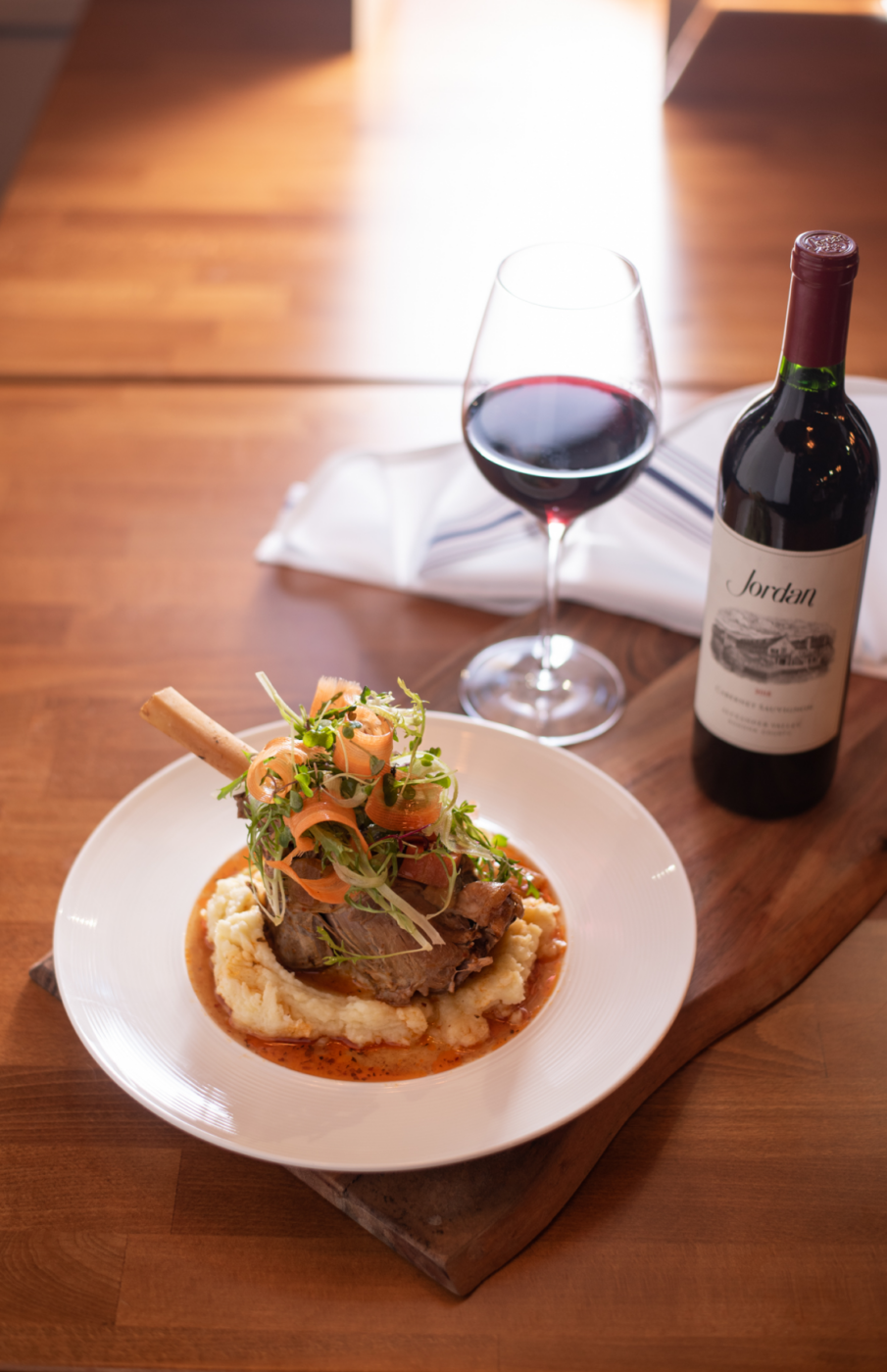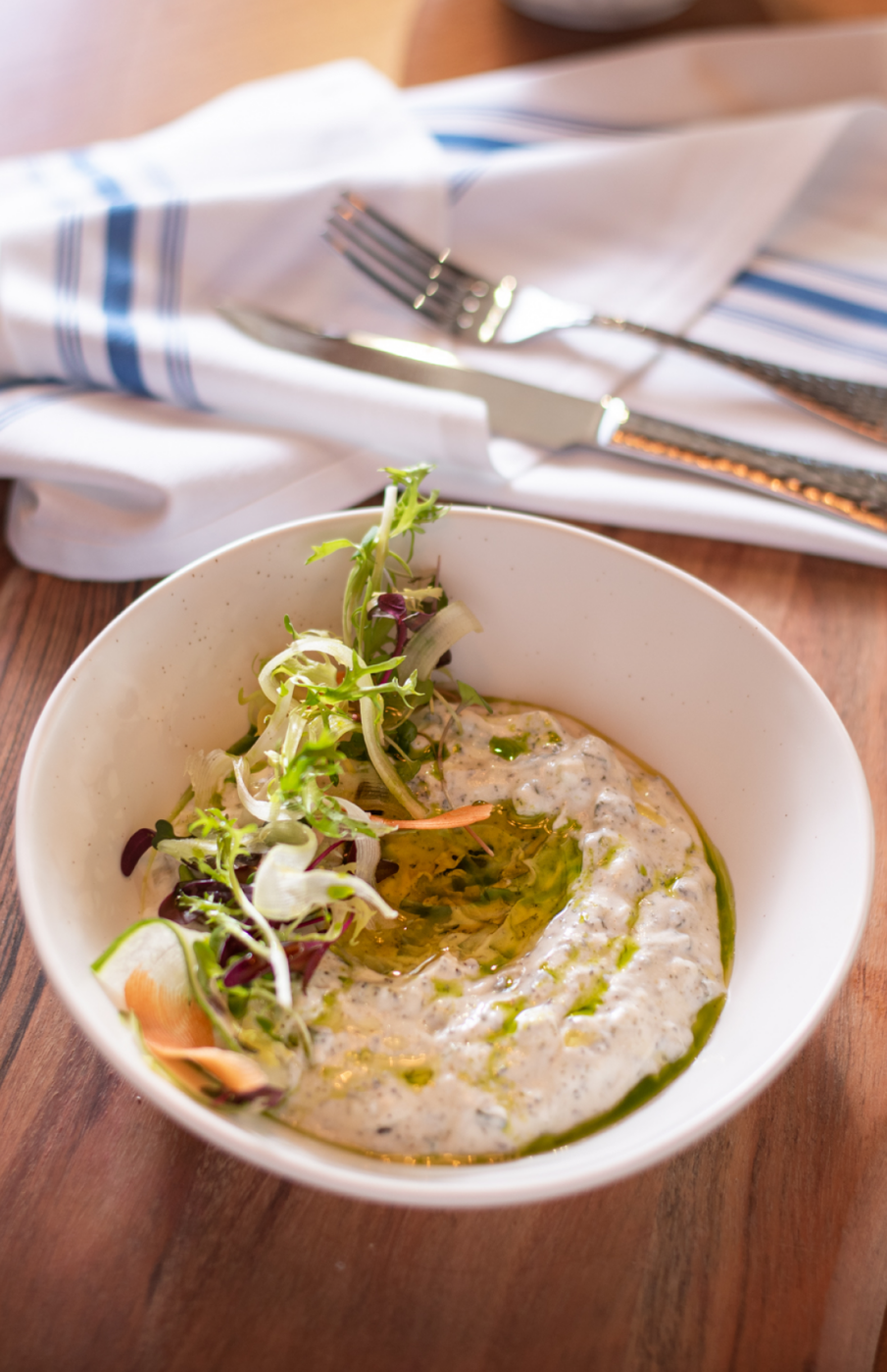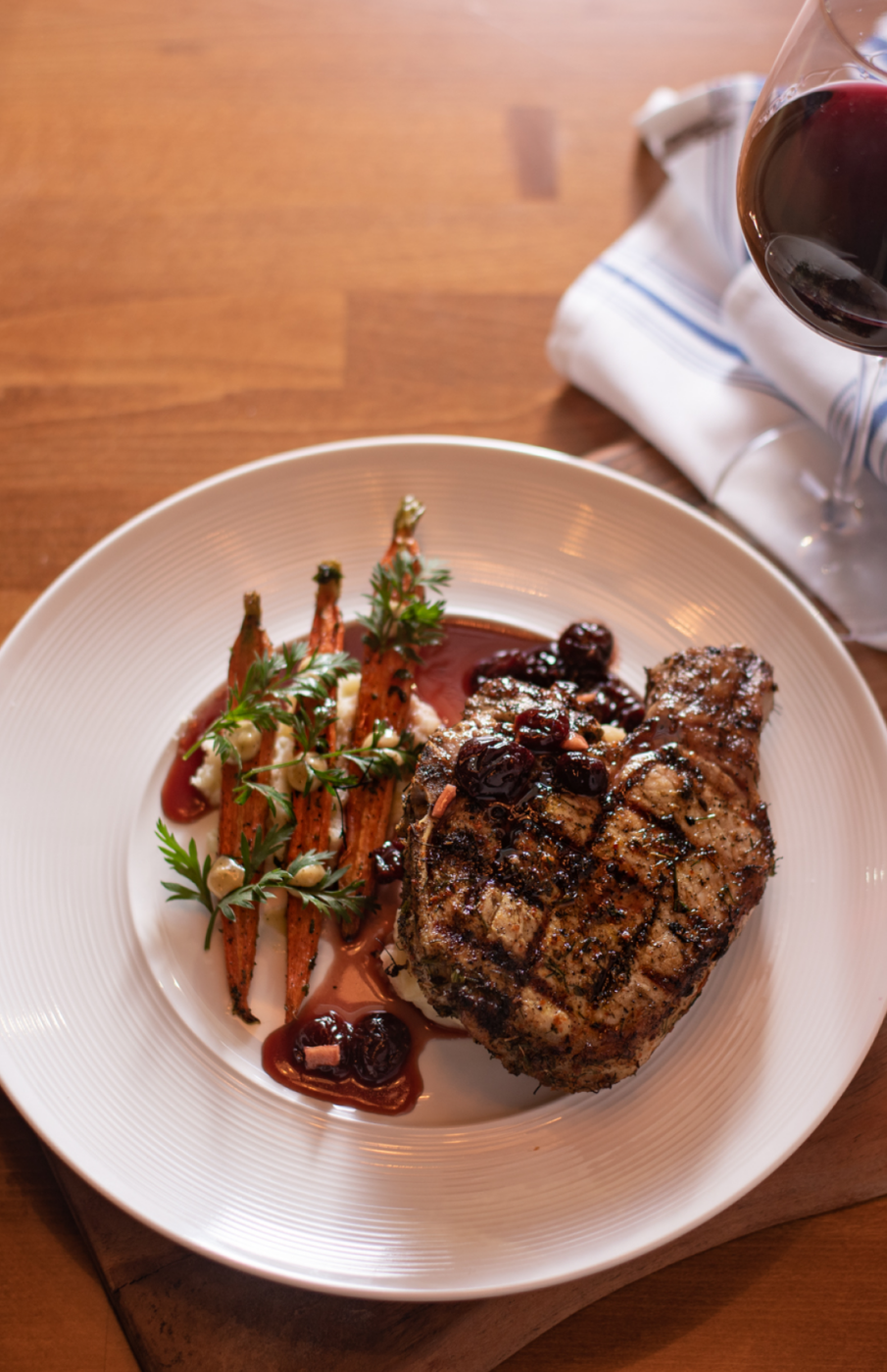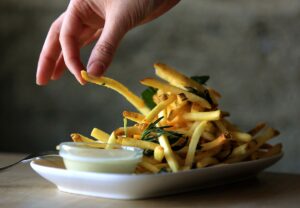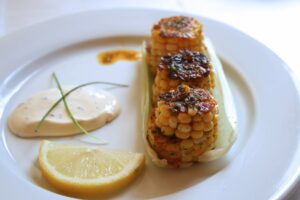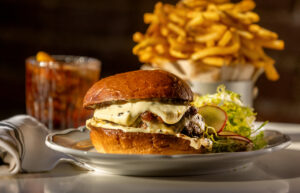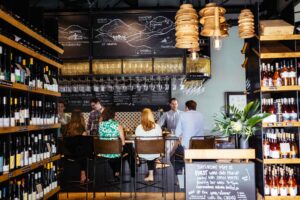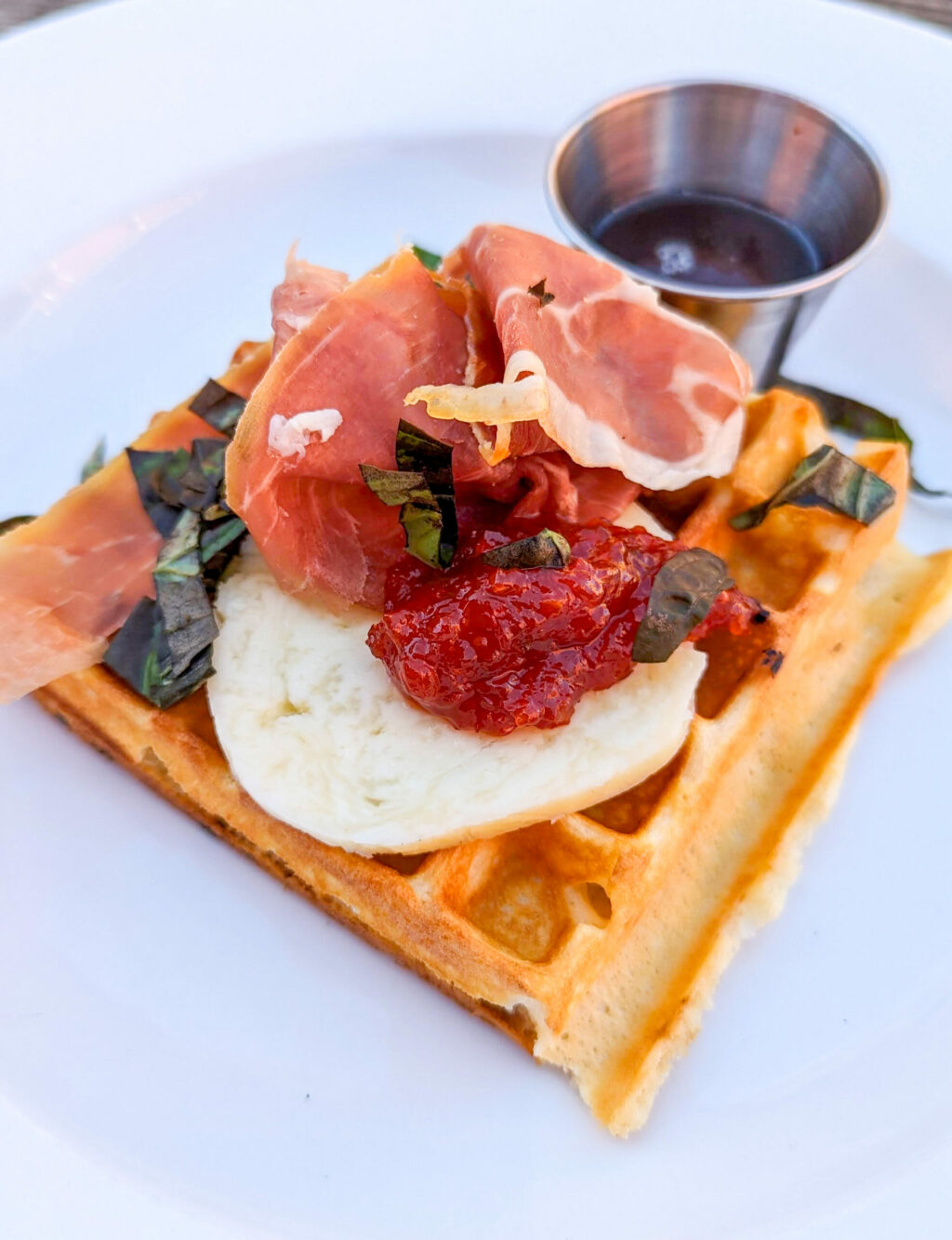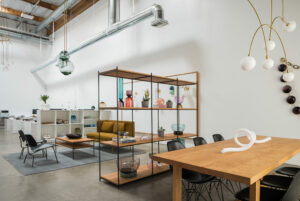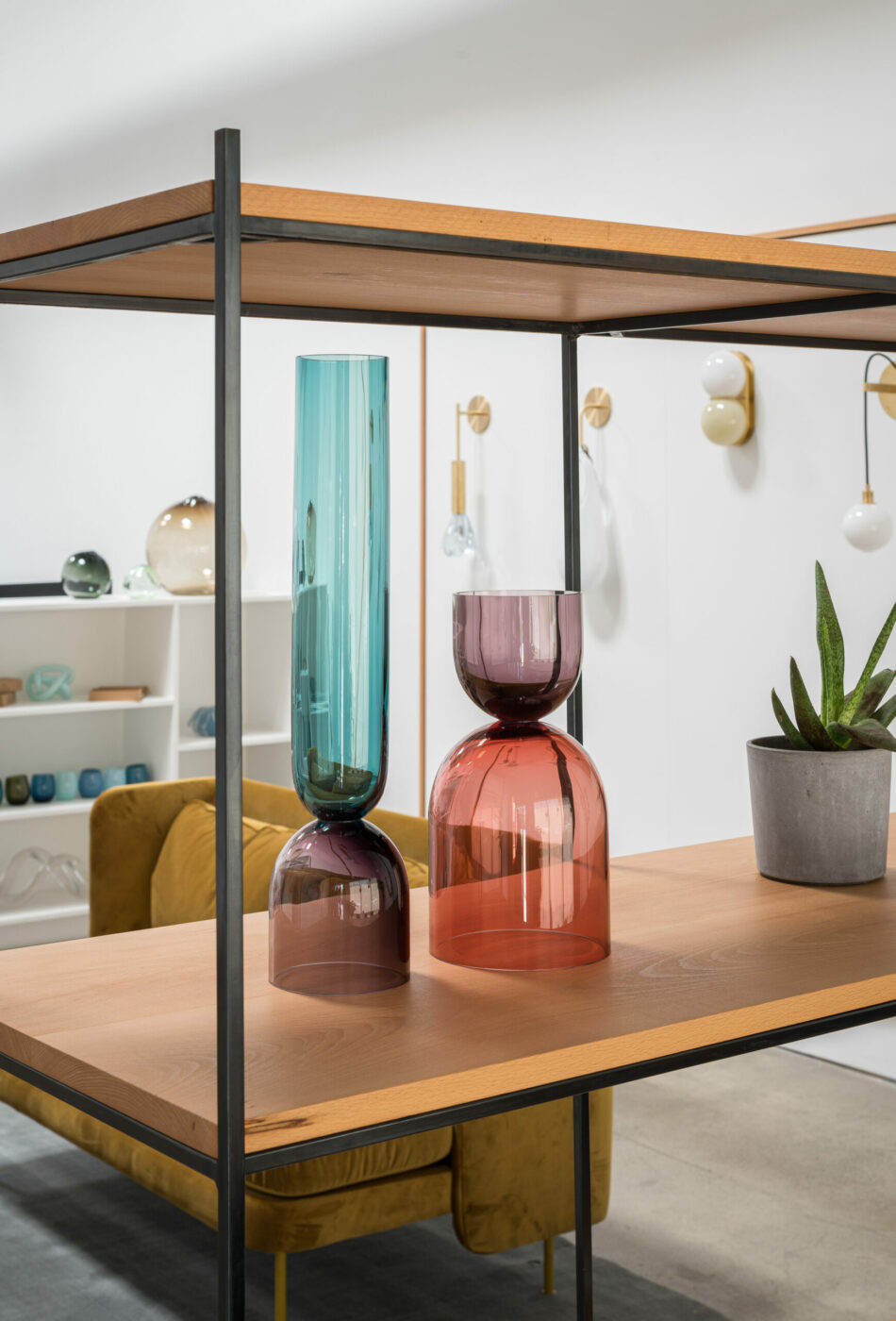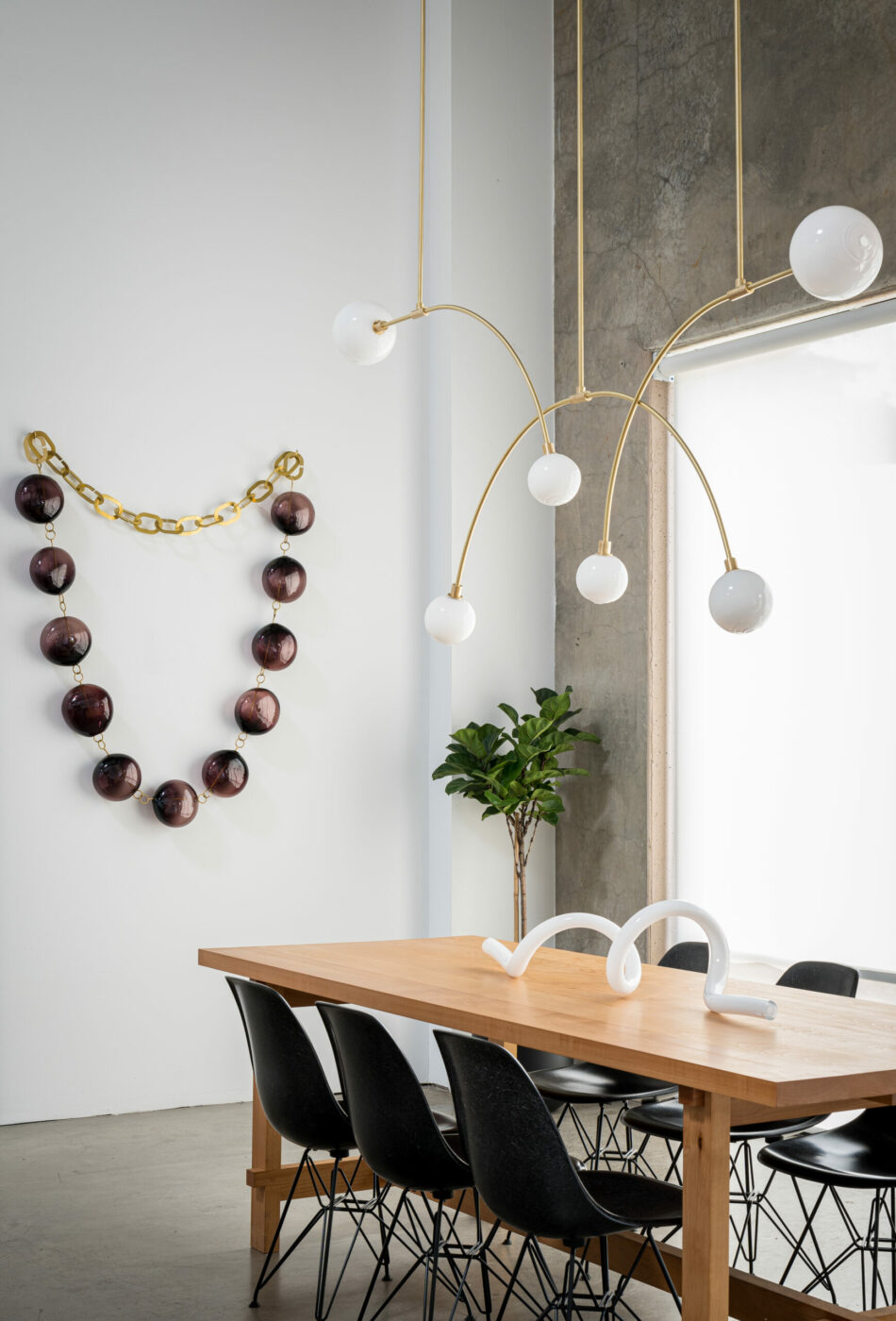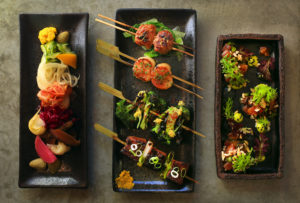As we’re fast approaching Valentine’s Day, love is in the air. Whether you’re planning a romantic dinner for two or an evening out with friends, here are some of the best restaurants and sweet treats around to celebrate the day of love. (Dinners are served Feb. 14, unless otherwise noted.)
Santa Rosa
Marla Bakery: Marla bakery is teaming up with Dan Marioni of Marioni Wines to present a five-course Valentine’s supper. Menu highlights include Kusshi Oysters, Celery Root Soup, Salt Baked Trout for Two and a Parfait of Almond-Olive Oil Cake to finish. $200 per person (including tax and gratuity). Purchase tickets at pdne.ws/4bkTNrh. 208 Davis St., Santa Rosa. 707-852-4091.
John Ash & Co.: A five-course prix fixe Valentine’s menu that begins with oysters au gratin. Then, choose between a variety of dishes for each course, including baby lettuce salad, seared sea scallop, truffle tagliatelle pasta, Angus beef and bittersweet chocolate flourless cake for dessert. $125 per person, $65 extra for wine pairing. Reserve a table at opentable.com/john-ash-and-co. 4350 Barnes Road, 707-527-7687.
Benovia Winery: Join the winery for a Paint & Sip wine-tasting extravaganza. Guests will paint a Benovia-branded wine glass during a guided tasting. The finished product will make a perfect memento of a fun Valentine’s weekend. This experience is available Feb. 14- 18. $25 for a branded wine glass. Make reservations by calling the winery at 707-921-1040. For more information, go to pdne.ws/3UmB9ZW. 3339 Hartman Lane, Santa Rosa.
Healdsburg
Dry Creek Kitchen: A five-course prix fixe menu for $175 per person, with an optional wine pairing for $95. The menu includes Tomales Bay Miyagi oyster, fluke “aguachile,” slow-poached egg, pork and pistachio agnolotti, duo of Painted Hills prime beef and a dark chocolate and red wine mousse cake for dessert. Reserve a table at pdne.ws/3HHDzLl. 317 Healdsburg Ave., 707-431-0330, drycreekkitchen.com
Hazel Hill at Montage Healdsburg: Six-course prix fixe dinner from 5 – 9 p.m. The menu includes Morro Bay oysters, sacchetti, sea scallop, golden tilefish, lamb and baked Alaska. Dinner for $225 per person, with the option to add local wines for $95 or reserve wines for $250. Call 707-354-6900 for reservations. 100 Montage Way, montagehotels.com/healdsburg
Jordan Vineyard & Winery: A romantic Caviar Tasting with a view at the Vista Point pavilion. Couples will be seated at private tables for the tasting, which features the Jordan Chef’s Reserve Caviar. Guests will also enjoy buckwheat blini and caviar accoutrements, as well as tastings of Chardonnay and Champagne. Tastings begin at 2:30 p.m. and conclude at 4:15 p.m. Available Feb. 13-16. $150 per person. Purchase tickets at pdne.ws/42iXIAV. 1474 Alexander Valley Road, Healdsburg, 707-431-5250, jordanwinery.com
The Rooftop at Harmon Guest House: This menu is served throughout February and includes special Dungeness Crab Cakes ($24) and Rooftop Chocolate Fondue for Two ($15) with an optional shot of liqueur ($4), along with romantic rooftop views. The Rooftop exclusively accepts walk-ins. 227 Healdsburg Ave., Healdsburg. 707-922-5442. harmonguesthouse.com/the-rooftop
The Second Story at Little Saint: The upstairs restaurant at Little Saint is hosting a Saint Valentine Dinner, with a special tasting menu experience. Guests can enjoy “sweet surprises from the kitchen” to the sound of live vinyl tunes from the dynamic couple DJ Paz and Gabriel. $150 per person. Reservations can be made on OpenTable. 25 North St., Healdsburg, 707-433-8207, littlesainthealdsburg.com
Spoonbar: This special dinner menu complements the restaurant’s regular offerings. Menu highlights include broiled Tomales Bay oysters ($24), rack of spring lamb for two ($69) and chocolate mousse cake ($15). This dinner experience is available through Feb. 18. Reserve a table at pdne.ws/47XBIfV. 219 Healdsburg Ave., Healdsburg, 707-433-7222, spoonbar.com

Rohnert Park
Mountain Mike’s Pizza: Pizza filled (and made) with love. Throughout February, order a heart-shaped pizza in a lovingly decorated box. Choose one topping for the heart pizza for the same price as a large one-topping pizza. 6314 Commerce Blvd., 707-303-7474. Additional locations in Santa Rosa, Cloverdale, Windsor and Petaluma. Visit mountainmikespizza.com/locations to find the location nearest to you.
Petaluma
Seared: Three-course prix fixe dinner. For the first course, choose between a winter spinach salad or a butternut squash and pear bisque. For the main, options include filet mignon, line-caught halibut or Dungeness crab pappardelle ($70-72). For dessert, choose between a chocolate mousse cake or a pistachio pot de creme. Additionally, special starters include options such as ahi crudo or lobster toast ($20-22). Book a table at pdne.ws/3UmUyKz or call the restaurant at 707-762-5997. 170 Petaluma Blvd. N., 707-762-5997, petalumaseared.com
Sonoma
Layla at MacArthur Place: A four-course prix fixe tasting menu. Begin with an amuse of pain perdu with caviar and scallions. For the appetizer, enjoy chicories with citrus supreme, apple and chickpeas. For the main course, choose from sunchoke tortellini, scallops or NY wagyu. For dessert, choose from a Meyer lemon pudding cake or a meringue with grapefruit sorbet and pistachio butter. $185 per person. Reserve a table at pdne.ws/3UnqvlP. 29 E. MacArthur St., 707-938-2929, macarthurplace.com/layla
Wit & Wisdom: A three-course prix fixe dinner. For the starter, choose between dishes such as duck wings and marinated beets; for the entree, a choice of lamb sausage pizza, surf and turf and other dishes; and for dessert, a chocolate “Cupid’s Arrow.” $95 per person. Add a wine pairing for $65. A la carte sides are also available for an extra fee. Reserve a table at pdne.ws/4bl0TMr. 1325 Broadway, 707-931-3405, witandwisdomsonoma.com
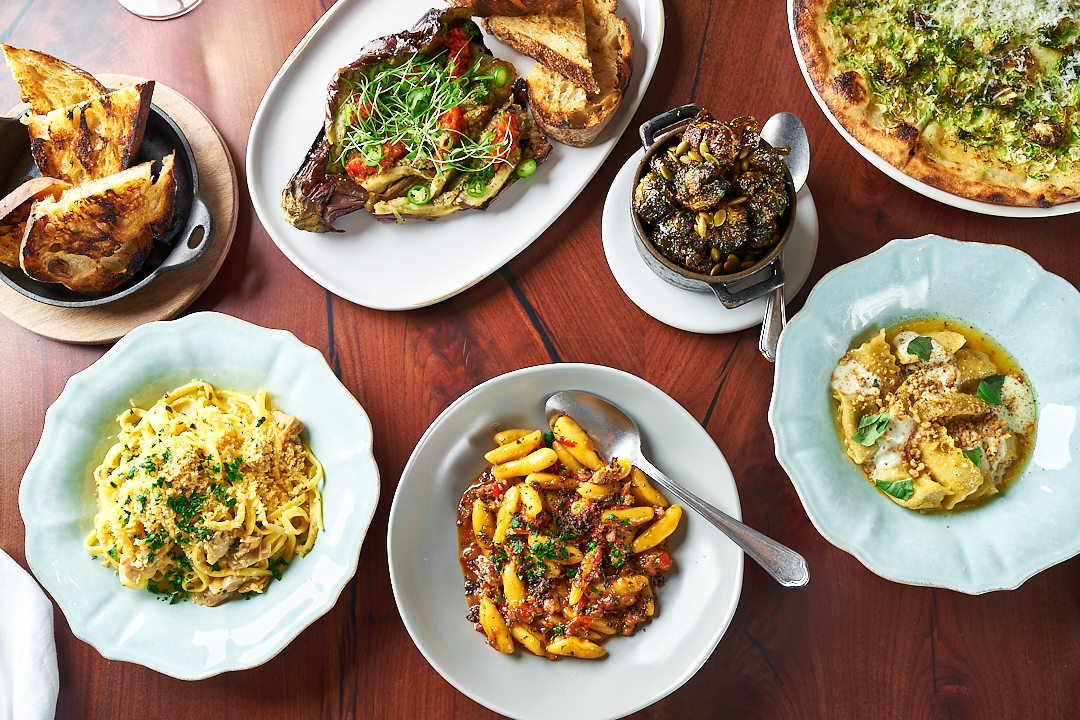
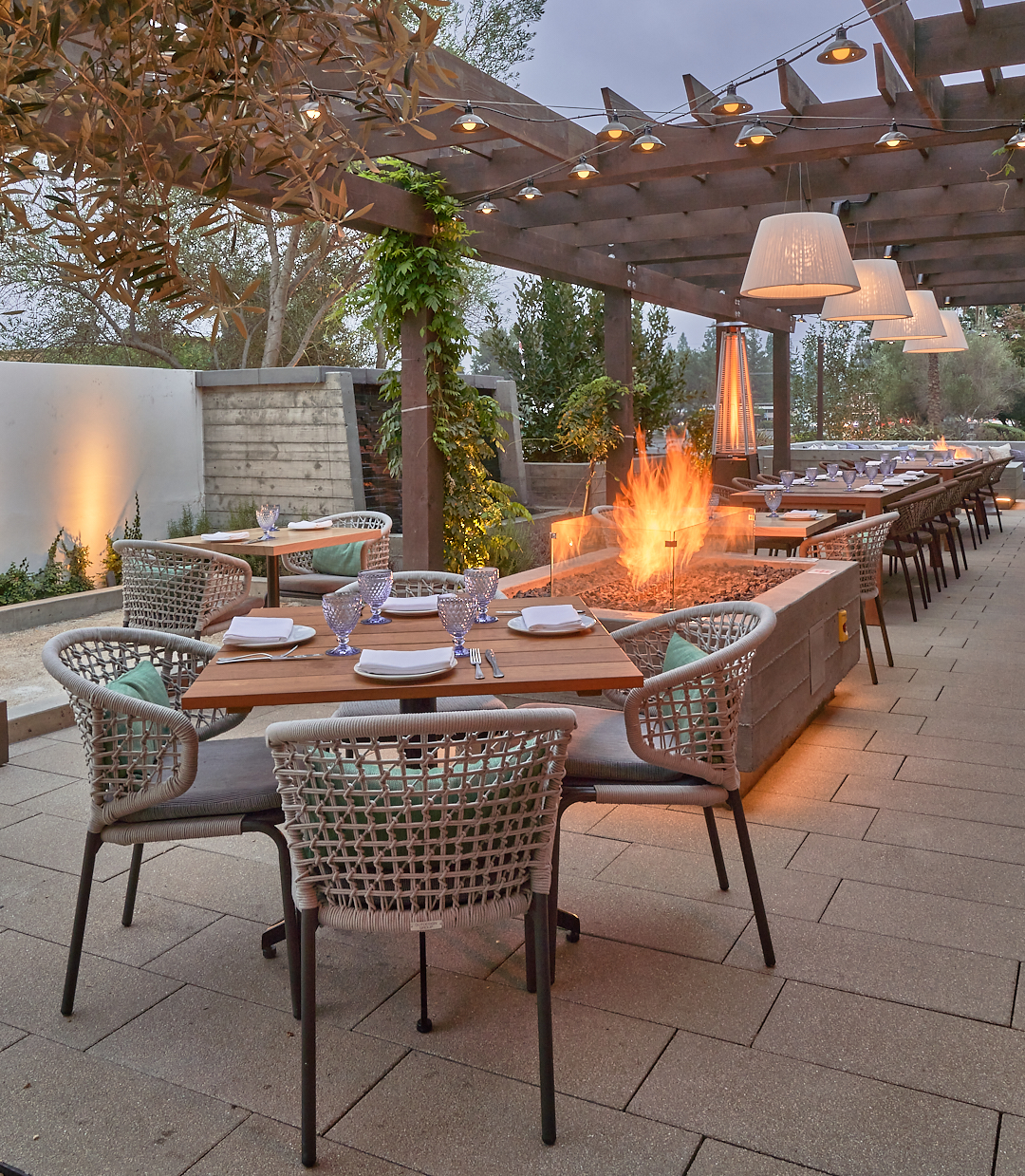
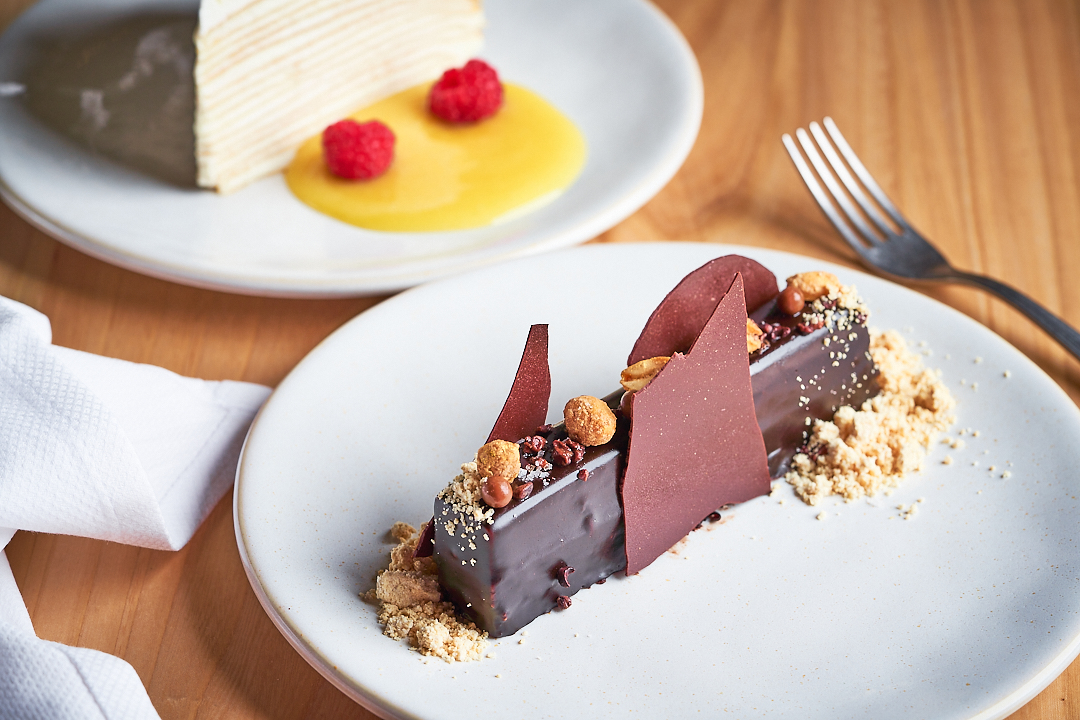
West county
Farmhouse Inn: The chefs at Farmhouse Restaurant have crafted a Valentine’s Day tasting menu featuring seasonal, locally-sourced ingredients. Add-ons include curated wine pairings. $300 per person. Make a reservation at pdne.ws/47ZMmDd. 7871 River Road, Forestville. 707-887-3300.
The Lodge at Dawn Ranch: Guerneville’s The Lodge at Dawn Ranch is hosting a special dinner for Valentine’s Day. The eight-course tasting menu celebrates local ingredients and is influenced by a variety of cuisines. Expect dishes like Tomales Bay Oysters, Picanha (charcoal-grilled culotte steak, tatemada bearnaise, spigarello broccoli) and a Thousand Layer Crepe with dark chocolate, raspberry powder and hazelnut crème. $110 per person. Make a reservation at dawnranch.com. 16467 Highway 116, Guerneville. 707-869-0656.
On the coast
Coast Kitchen: Valentine’s Day dinner with an ocean view. Enjoy a five-course prix fixe dinner which includes dishes such as tuna, halibut, pan-roasted duck breast, Oak Ridge angus farm beef tenderloin, and espresso and chocolate flourless cake. $175 per person. Reserve a table at pdne.ws/3UpENCq. 21780 Highway 1, Jenner, 707-847-3231, coastkitchensonoma.com
Napa
FARM at Carneros: FARM restaurant is hosting dinners for two, featuring a seasonally inspired five-course tasting menu complemented by cocktails and local wine pairings. Expect courses like caviar and oysters and dry-aged Brandt ribeye, and finish with a passionfruit caramel cheesecake. This Valentine’s dinner is offered through Feb. 17. $165 per person. Make a reservation at pdne.ws/3UFcD6P. 4048 Sonoma Highway, Napa, 707-299-4900.
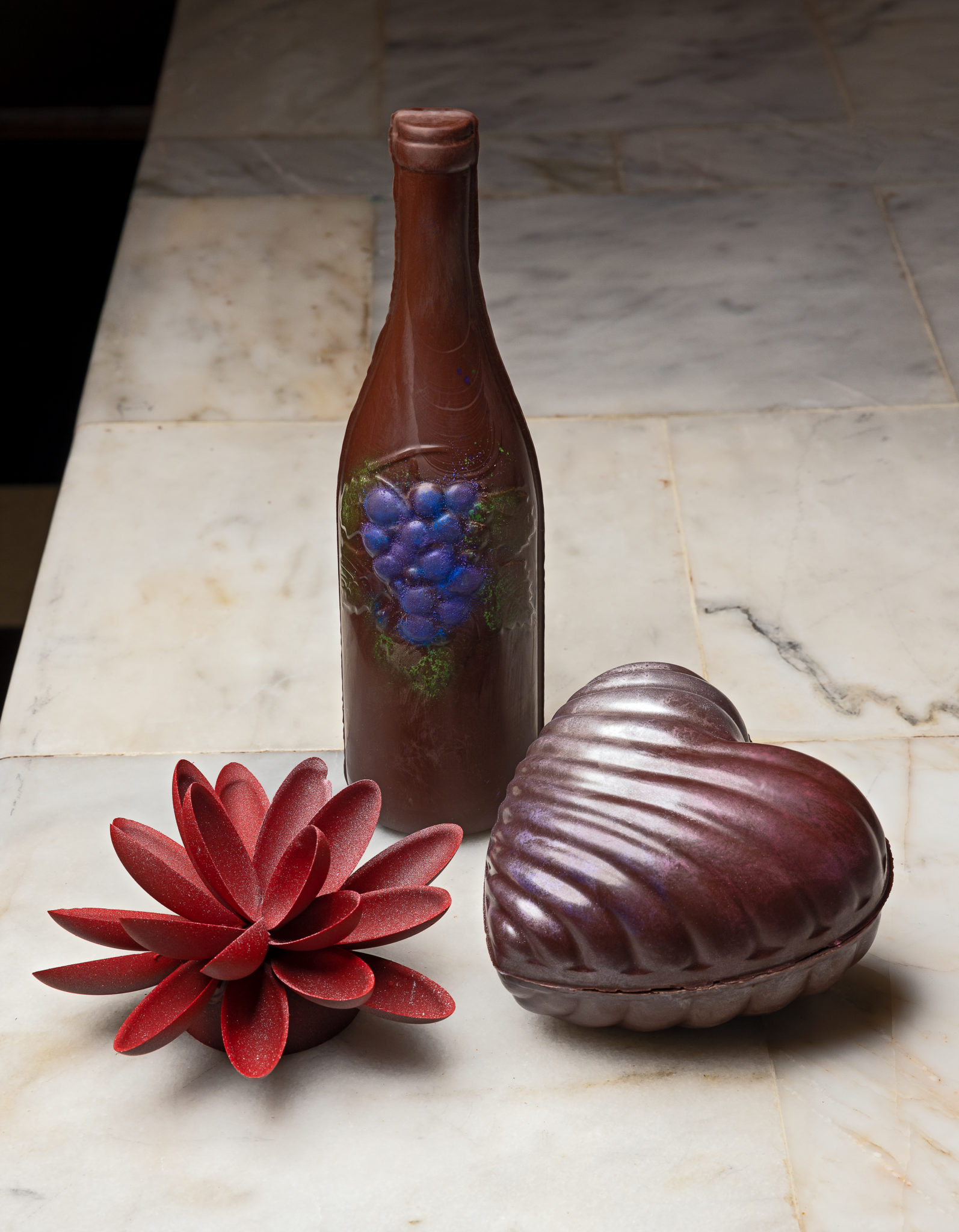
Takeout treats
Cookie…Take a Bite: A gift that’s perfect for anyone, from friends and family to sweethearts. This gourmet cookie shop offers three different Valentine’s Day tins filled with a variety of treats. Choose from the Deluxe Tin with more than 16 cookies ($28.50), the Premium Tin with more than 25 ($39.50) or the Platinum Tin with more than 42 ($52). The cookies come with adorable messages and in heart shapes and flavors like chocolate, lemon and raspberry. 430 Larkfield Center, Santa Rosa, 707-291-1785, cookietakeabite.com
Fleur Sauvage: Preorder by email to pick up a Valentine’s Day-themed gift box. Wow your special someone with the pink Valentine’s heart filled with 16 bonbons for $49. To place an order, email fleursavagechocolate@gmail.com. 370 Windsor River Road, Windsor, fleursauvagechocolates.com
Nothing Bundt Cakes: Choose from 13 Valentine’s Day-themed desserts and packages. Options include sweet treats like the “Conversation Hearts Bundtinis” or a “Yours, Mine, Ours” miniature cake. You can add a customized message when you place your order. Prices vary. Place orders online at pdne.ws/3SBAWAV. 266 Coddingtown Center, Santa Rosa, 707-708-4800, nothingbundtcakes.com


